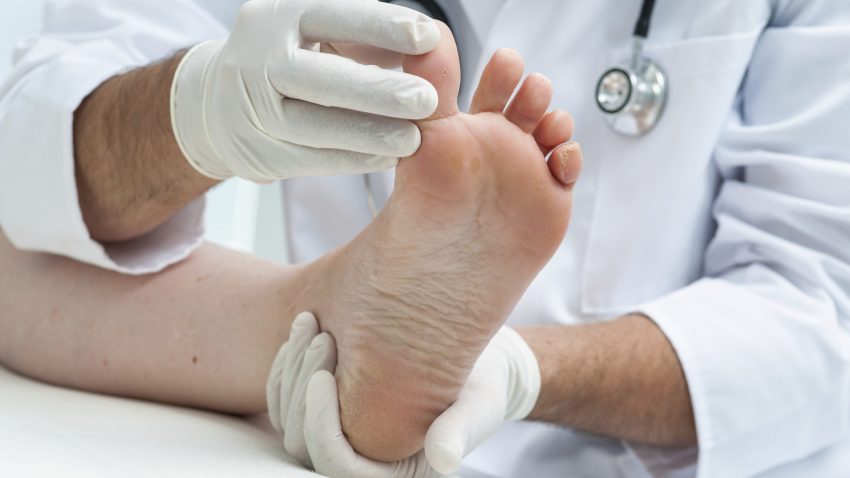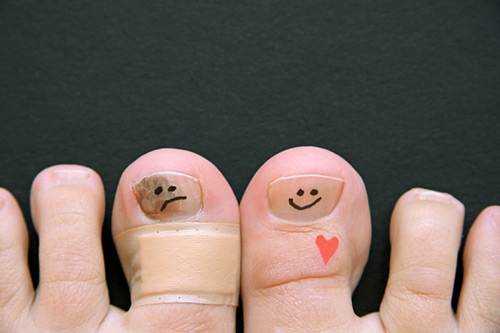

Podiatry and Foot Health: A New Age of Care
The House and the Basement
When it comes time to work on our bodies, we focus on our arms, legs, and abs. We show them off, but what about the parts that we don’t show off or work on– the parts that hold up the rest of the structure? Namely, the feet. Doctor Jeffrey Oster, who has been a podiatrist for thirty years, knows how important the relationship is between the foot and the body, comparing the body to a house structure. “A bad basement makes for a bad house,” he says. “The feet are the foundation for the rest of the body.” The same is true in reverse, he adds. He makes the point that the body has a direct affect on the foot, as he reflects on a patient he recently saw who had had a hip replacement which lead to a leg length difference which lead to foot pain which affected his back. The relationship between the foot and the body is a cycle that generates constant feedback.
Common Problems
Oster has been a podiatrist for thirty years and recently relocated his practice to Colorado from Ohio. Due to his previous experience and by being the only podiatrist in a sixty mile radius, he recognizes common problems as “age related,” he claims. “Customarily we see a thirty five to fifty year old who is active but not capable of healing as fast. Someone in the fifteen to thirty year old age range can heal quickly.” However, he also knows that these problems, “vary from person to person. Everyone is a unique package of needs.”
Staying Healthy
Maintaining foot health means taking hygiene, structure, activity, and more into consideration. How can you maintain good foot health and avoid trips to the podiatrist?
- Wash feet daily with soap and water and dry thoroughly afterwards.
- Keep your toenails trimmed, and when cutting, be sure to go straight across and avoid ingrown toenails.
- Wear shoes that suit your foot shape, are specific to your activity, feel comfortable, and allow room for you to move around.

If you do have any pain or discomfort in the form of a bunion, foot fungus, fractures in the ankle, foot, or any other foot related unease, be sure to make an appointment to see a podiatrist.
Changes
Podiatry has gone through changes since originating, and according to Oster, it still needs to mature. Originally, podiatrists and chiropodists were one and the same. In terms of physical care and upkeep, the chiropodist would trim corners, and help with the maintenance. Now, podiatry is seen as a true medical practice. Podiatrists are trained to perform foot and ankle surgery. There is a requirement of four years of medical school and three years of residency.
Podiatrists and orthopedics used to be on separate teams as well. It is now common to see them in the same practice together, using the same supplies. “I think we’ve learned to respect each other,” Says Oster, “each of us have a specialty in the craft. Together we form a better alliance for better healthcare.”
Other Signs
Direct pain in the foot is not the only way to determine an issue, says Oster. There are MRIs, X-rays, CT scans, and more. “What’s interesting is that I wear a lot of hats,” says Oster, describing the ways in which he determines health within the feet, “I can become a dermatologist. I see a lot of cold related injuries. Then I can become an orthopedist, neurologist, finding subsequent numbness in the feet. In one respect, I only focus on the knee down. You can’t divorce the rest of the body, but it does help to focus on one area, so it changes the approach to the treatment.”
Preventative Measures
 Patients with diabetes are encouraged to go in for regular visits to the podiatrist because diabetics have a tendency to lose feeling in their feet. Having a regular checkup also allows for a doctor-patient relationship. If a sudden problem arises, help will be easily accessible and any potential problems may be more easily determined due to standing consultations and better patient understanding.
Patients with diabetes are encouraged to go in for regular visits to the podiatrist because diabetics have a tendency to lose feeling in their feet. Having a regular checkup also allows for a doctor-patient relationship. If a sudden problem arises, help will be easily accessible and any potential problems may be more easily determined due to standing consultations and better patient understanding.
If all else seems up to par, what can be done to maintain stamina? Dr. Oster recommends wearing activity specific shoes, and exercising the muscles in the lower leg, including the calf and the Achilles tendon. “Thirty five to fifty year old age problems are related to tightness in the calf muscle. Strength and flexibility are key to preventing injuries. It is dependent just as much on stretching as on strength. With moderation, walking is one of the best exercises you can participate in.”
Find more of Jeffrey Oster’s insights on his blog, http://www.myfootshop.com/blog.

